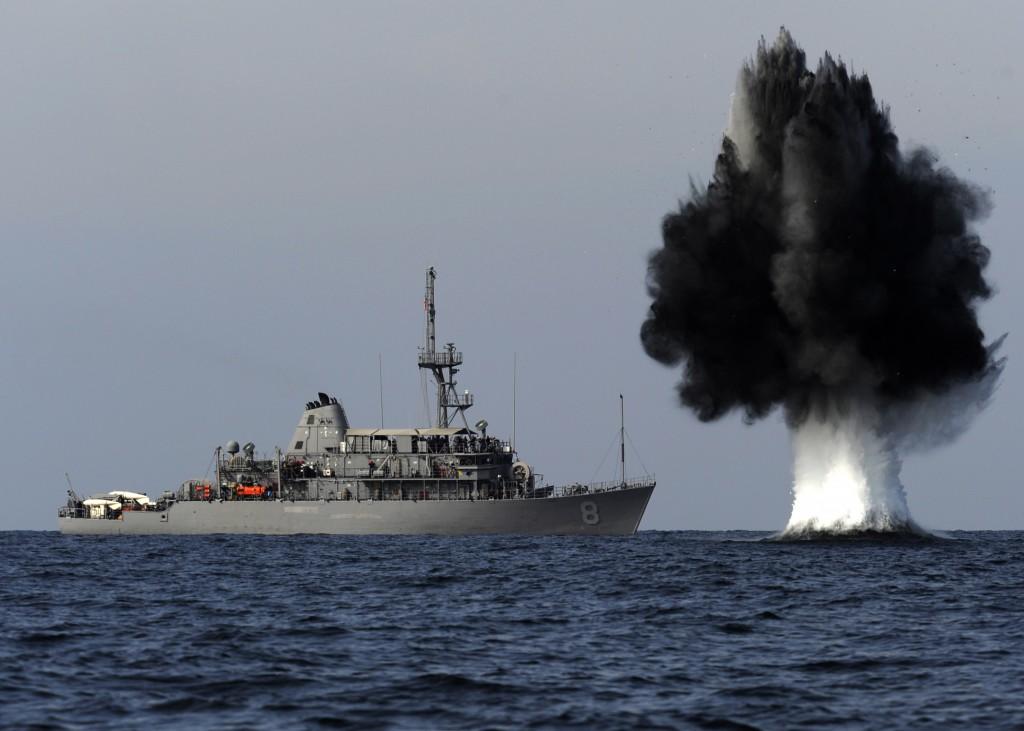From the bookshelf: ‘Naval minewarfare: politics to practicalities’
Posted By James Goldrick on March 19, 2020 @ 10:59

Captain Chris O’Flaherty of the Royal Navy has produced a timely study of the theory and practice of naval mine warfare in a period when strategic and technological change are challenging traditional concepts of maritime operations. Naval minewarfare [1], written by a serving British officer who is a deep specialist in mine warfare with extensive frontline experience, explains in clear and simple prose not only the mechanics of the trade, both offensive and defensive, but the history of mine warfare, its legal aspects, and contemporary doctrine and practice.
As the author notes, there has been ‘a general failure to appreciate the potential of mining’, despite the critical role it played in two world wars—and in many conflicts before and since 1945. Naval minewarfare sets the record straight and merits careful study by contemporary planners. The subtitle Politics to practicalities is apt. ‘Weapons that wait’ have a history stretching back hundreds of years; their first systematic—and effective—employment was during what is mistermed the Crimean War of 1853–56 (a conflict which extended not only to the Baltic Sea but the Kamchatka peninsula).
The chapter on 24 post–World War II mining ‘events’ is especially useful because it demonstrates the ways in which mines, and the threat of mines, have been employed by many agents—even right-wing elements in the United States. Given their essentially covert nature, just the possibility that mines have been deployed can be effective against an adversary. And if mines have been laid, even the most effective mine countermeasure operation can only achieve a probability of their clearance, not certainty. The one exception is when concrete proof can be provided that the number of mines cleared equates to the number deployed—something that’s very rarely the case. Even in March 2020, the 24th mining event is still playing out [2] in the southern Red Sea as drifting mines, possibly originally laid by Houthi militia, threaten shipping.
Geography matters in mine warfare, of which the Chinese will be well aware. We are prone to think of mines as a weapon only for a weaker power. The truth is that they have been used very effectively to achieve sea control by denying access to the open sea to aggressor forces that are at a geographic (and oceanographic) disadvantage. The British mining campaign in the North Sea and English Channel in 1917–18 made a vital contribution to wearing down both the German U-boats and the surface forces that protected their departure and return to their home ports. Germany’s invasion of Denmark and Norway in 1940 was in part driven by the German Navy’s determination not to be closed in that way again; the fall of France and the access it gave to France’s Atlantic ports was a bonus.
Dominating the sea areas out to the first island chain will mean little to China if the gaps in that chain become mine-strewn barriers that prevent the Chinese navy from accessing the open ocean. The Japanese learned that lesson the hard way in 1945 when the fittingly named Operation Starvation around Japan’s main islands used air-laid mines to close off practically all of the country’s seaborne communications, both external and domestic. In the last five months of the conflict, mines were responsible for sinking or damaging more Japanese ships than any other form of attack—including submarines and aircraft.
The legality of mine warfare is inextricably bound up in the politics of conflict and the extent to which war is limited or total. O’Flaherty’s chapter on the weapon’s legal aspects bears careful study. Although mine warfare is apparently hedged about with many legal restrictions, they are by no means straightforward—and much less limiting than people think. The truth is that legal arguments can be found to justify the deployment of mines not only in territorial waters, but on the high seas and in many modes.
One simple approach is to give enough warning for neutral and civilian craft to clear the area. Furthermore, technology can limit the ‘live’ period of deployed mines or make them highly discriminating in their reaction to a target. Indeed, unmanned autonomous vehicles have the potential to deploy to a set location, remain on task for a required period and return to their parent afterwards—perhaps allowing an entire operation to remain covert if the political circumstances dictate.
In all, Naval minewarfare is worth reading if one is to understand both the potential and the challenges of mine warfare. It contains important lessons for the Australian defence community. As we think of ways to improve the maritime strike capabilities of our defence force, mines must be at the centre of our considerations. Both a true, multi-platform offensive and defensive minelaying capability and a substantial mine countermeasure force should be integral to Australia’s maritime force structure.
Article printed from The Strategist: https://aspistrategist.ru
URL to article: /from-the-bookshelf-naval-minewarfare-politics-to-practicalities/
URLs in this post:
[1] Naval minewarfare: https://blackwells.co.uk/bookshop/product/Naval-Minewarfare-by-Chris-OFlaherty-author/9781789630862
[2] 24th mining event is still playing out: https://safetyatsea.net/news/2020/floating-mines-threaten-marine-traffic-in-southern-red-sea/
Click here to print.